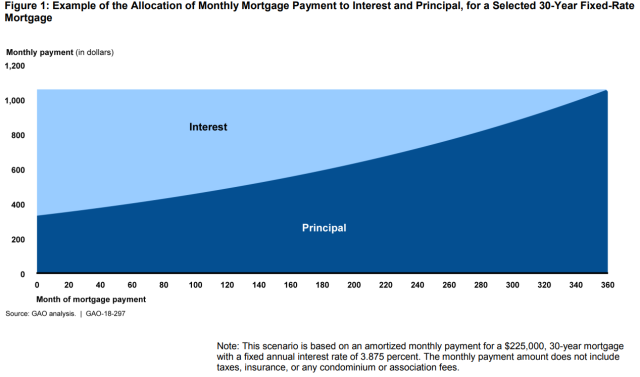Equity Release Mortgages Explained for New Users
Equity Release Mortgages Explained for New Users
Blog Article
Exploring the Various Kinds Of Equity Release Mortgages Available Today
Equity Release mortgages present numerous choices for homeowners aged 55 and over. equity release mortgages. These financial products accommodate different demands and choices, allowing individuals to accessibility funds from their residential property. From life time home mortgages to common admiration home mortgages, each type supplies unique advantages. Understanding these alternatives is essential for making notified decisions. What elements should one consider when picking the most ideal equity Release plan? The details that comply with may lose light on this essential subject
Comprehending Equity Release Mortgages
Equity Release home loans supply homeowners, normally those aged 55 and over, with a method to access the worth locked up in their building without needing to sell it. This financial option allows people to transform a section of their home equity into money, which can be utilized for numerous purposes, such as home improvements, settling financial debts, or funding retirement.Equity Release can take different types, but it basically entails loaning versus the worth of the home while keeping ownership. Homeowners can choose to obtain a round figure or a series of smaller sized payments, depending upon their economic needs and preferences.Additionally, the quantity available for Release is affected by the residential or commercial property's worth, the homeowner's age, and certain loan provider standards. Generally, recognizing equity Release home mortgages is vital for home owners to make educated choices about taking advantage of their home's equity while taking into consideration the long-term implications.
Lifetime Mortgages
Life time mortgages represent one of one of the most popular kinds of equity Release. This economic product enables homeowners, typically aged 55 or older, to obtain against the worth of their residential or commercial property while keeping ownership. The car loan, which is protected versus the home, accumulates interest in time however does not need monthly settlements. Rather, the finance and accumulated interest are paid off when the homeowner passes away or moves into lasting care.Lifetime home mortgages provide flexibility, as debtors can choose to get a lump sum or opt for a drawdown center, accessing funds as required. Importantly, several plans included a no-negative-equity warranty, making sure that borrowers will certainly never owe greater than the value of their home. This feature offers comfort, allowing individuals to enjoy their retired life without the worry of depleting their estate. On the whole, lifetime mortgages function as a practical alternative for those seeking financial backing in later life.
Home Reversion Program

Drawdown Lifetime Mortgages
While several home owners look for means to access their wide range, drawdown lifetime home mortgages offer a flexible alternative that allows people to Release funds gradually. This sort of equity Release home loan makes it possible for homeowners to obtain against the value of their home while preserving ownership. Unlike standard lifetime home loans, drawdown strategies permit consumers to access a part of their equity upfront and withdraw additional funds as needed, approximately an established limit.This feature can be particularly helpful for those who wish to handle their finances meticulously, as it minimizes passion build-up by just billing rate of interest on the amounts drawn. Furthermore, drawdown lifetime home mortgages usually feature a "no negative equity warranty," making sure that consumers will never owe even more than their home's value. This choice matches retirees that prefer monetary safety and security and flexibility, permitting them to fulfill unanticipated expenses or maintain their way of living without having to market their building.
Improved Lifetime Mortgages
Boosted Lifetime Mortgages use distinct benefits for qualified home owners seeking to Release equity from their buildings. Recognizing the eligibility criteria is important, as it identifies who can gain from these specialized finances. It is also essential to examine the potential drawbacks linked with boosted options, ensuring a well-shaped viewpoint on their usage.
Eligibility Criteria Clarified
Understanding the eligibility criteria for Boosted Lifetime Mortgages is essential for potential candidates seeking to access the equity in their homes. Commonly, applicants have to be aged 55 or older, as this age requirement is basic in the equity Release market. House owners must have a residential or commercial property valued at a minimal limit, which can differ by loan provider. Notably, the residential property has to be their main house and in excellent condition. Lenders frequently analyze the property owner's health and wellness standing, as certain health and wellness problems may improve eligibility and advantages. Additionally, candidates need to not have existing significant debts protected against the residential property. Satisfying these criteria enables people to discover Boosted Lifetime Home mortgages as a viable choice for accessing funds linked up in their homes.
Advantages of Enhanced Mortgages
After clarifying the qualification standards, it becomes noticeable that Enhanced Lifetime Mortgages offer numerous significant benefits for home owners aiming to leverage their home equity. Primarily, they provide accessibility to a larger funding amount compared to common lifetime home mortgages, profiting those with health and wellness problems or age-related aspects that raise their life expectations danger. This boosted loaning ability enables homeowners to meet numerous economic requirements, such as home renovations or retirement costs. In addition, these home mortgages commonly come with adaptable payment choices, enabling debtors to handle their financial resources better. The no-negative-equity assurance better guarantees that homeowners will never ever owe even more than their home's value, giving assurance. In General, Enhanced Lifetime Home mortgages present an engaging option for eligible homeowners seeking economic solutions.
Potential Downsides Taken Into Consideration
While Boosted Lifetime Home loans provide countless benefits, possible downsides necessitate careful consideration. One substantial concern is the impact on inheritance; the equity launched decreases the value of the estate left to recipients. Additionally, these mortgages can accrue considerable passion with time, resulting in a substantial financial debt that may exceed the original financing amount. There may likewise be constraints on residential or commercial property modifications or rental, limiting homeowners' adaptability. In addition, boosted products commonly call for certain health and wellness conditions, suggesting not all house owners will certainly qualify. Finally, taking care of the charges and costs connected with these home loans can be complex, possibly bring about unanticipated prices. As a result, people ought to thoroughly assess their circumstance and consult economic advisors before proceeding.
Shared Appreciation Mortgages
Shared Appreciation Home loans represent an unique financial plan that allows homeowners to accessibility equity while sharing future residential or commercial property value boosts with the lender. This method offers prospective benefits such as decreased month-to-month settlements, but it additionally comes with drawbacks that need to be thoroughly thought about. Understanding the qualification demands is important for those interested in this option.
Principle Introduction
Equity Release mortgages, especially in the form of shared admiration home loans, supply homeowners a special financial service that allows them to gain access to funds by leveraging the worth of their property. In this plan, a lending institution provides a financing to the house owner, which is normally settled with a share of the residential property's future admiration in value. This indicates that when the homeowner markets the residential property or dies, the lender obtains a percentage of the boosted worth, as opposed to simply the first loan amount. Shared admiration home loans can be appealing for those wanting to supplement their revenue or financing substantial expenses while retaining possession of their home. The monetary implications of shared gratitude have to be thoroughly thought about by possible customers.
Benefits and Drawbacks
Shared appreciation mortgages can supply substantial economic advantages, they additionally come with notable drawbacks that potential borrowers should consider. These home mortgages enable house owners to accessibility equity in their buildings while sharing a portion of any future recognition with the loan provider. This setup can be valuable throughout times of increasing building values, supplying significant funds without monthly repayments. However, the main disadvantage is the prospective loss of equity; property owners might wind up with considerably reduced inheritance for beneficiaries. Additionally, the complexity of the terms can bring about misunderstandings pertaining to payment commitments and the portion of appreciation owed. It is important for borrowers to evaluate these variables carefully before dedicating to a shared gratitude mortgage.

Eligibility Needs
What requirements must homeowners meet to certify for a common admiration mortgage? Largely, candidates should go to the very least 55 years of ages, ensuring they are within the target market for equity Release items. Additionally, the residential property needs to be their main house and typically valued above a specified minimum threshold, commonly around ? 100,000. Lenders also assess the property owner's monetary scenarios, consisting of revenue and exceptional financial obligations, to establish they can take care of the mortgage responsibly. Importantly, the residential property should be in good condition and free from significant legal encumbrances. Property owners ought to also have a clear understanding of the terms, consisting of exactly how appreciation will be shared with the loan provider upon sale or transfer of the residential property, as this affects overall returns.
Picking the Right Equity Release Choice

Regularly Asked Inquiries
What Age Do I Need to Be for Equity Release?
The age demand for equity Release typically begins at 55 for most plans. Nevertheless, some service providers might use options for those aged 60 and above, mirroring differing terms based on specific situations and lending institution policies.
Will Equity Release Affect My Inheritance?
Equity Release can affect inheritance, as the amount obtained plus rate of interest reduces the estate's worth. Successors might get much less than anticipated, depending on the residential or commercial property's appreciation and the total financial debt at the time of passing.
Can I Relocate House With Equity Release?
The inquiry of relocating house with equity Release arises frequently. Typically, individuals can transfer their equity Release strategy to a new residential property, yet specific conditions might apply, calling for appointment with the loan provider for support.
Are There Costs Connected With Equity Release Mortgages?
Costs related to equity Release home loans can consist of plan fees, assessment fees, and lawful prices. In addition, there may be very early settlement costs, which can affect the overall price and economic implications for the consumer.
Just How Does Equity Release Effect My Tax Situation?
Equity Release can affect one's tax scenario by possibly raising taxed income, as released funds are taken into consideration capital. Nevertheless, it normally does not sustain instant tax obligations, making it essential to seek advice from an economic advisor for tailored guidance.
Verdict
In summary, the variety of equity Release home mortgages offered today offers home owners aged 55 and over numerous pathways to access their building's value - equity release check these guys out mortgages. Whether choosing a lifetime mortgage, home reversion strategy, or various other options, each choice provides distinctive advantages tailored to specific financial requirements. Cautious consideration and appointment with a monetary expert are important to assure the selected equity Release service lines up with personal goals and monetary situations, eventually facilitating educated decision-making for a safe and secure financial future. Equity Release home loans existing numerous alternatives for house owners aged 55 and over. Equity Release home loans offer home owners, generally those aged 55 and over, with a way to access the worth connected up in their property without requiring to offer it. Improved Life time Home loans provide distinct advantages for eligible property owners looking for to Release equity from their properties. Equity Release home loans, specifically in the type of common admiration mortgages, supply home owners a special economic service that enables them to access funds by leveraging the value of their building. In recap, the selection of equity Release mortgages readily available today provides property owners aged 55 and over multiple paths to access their building's worth
Report this page